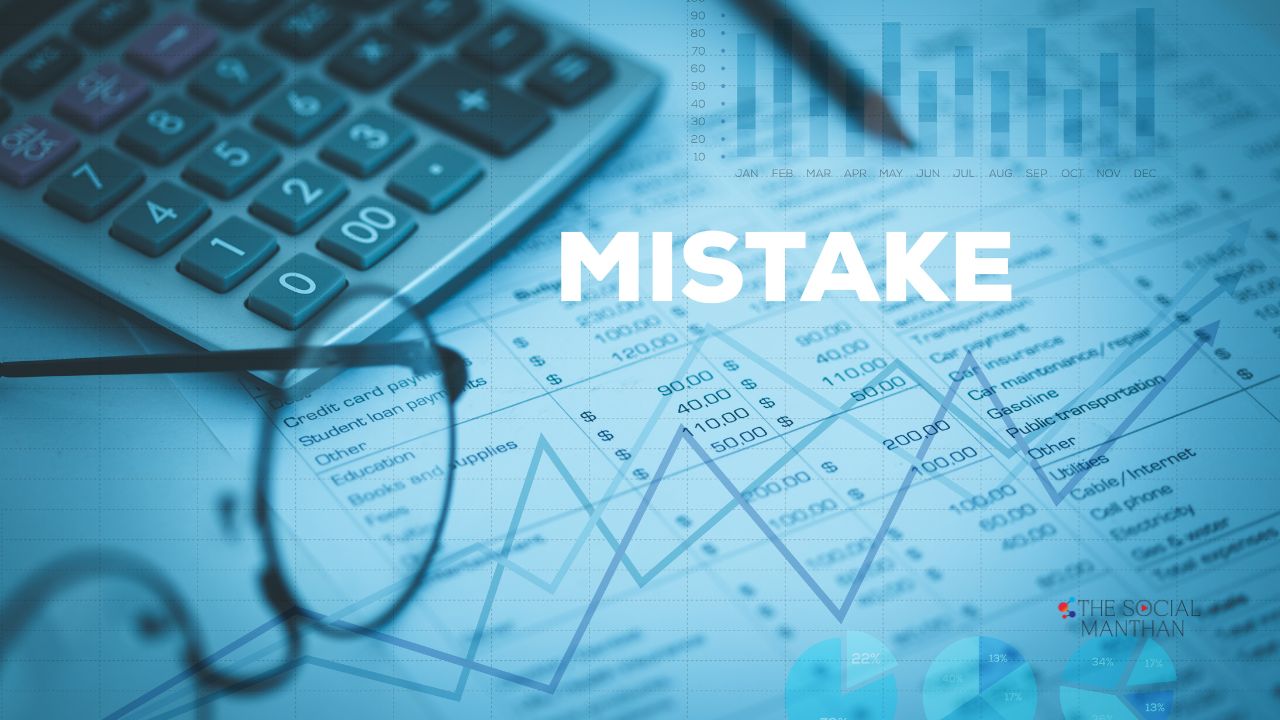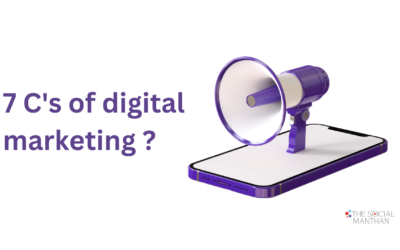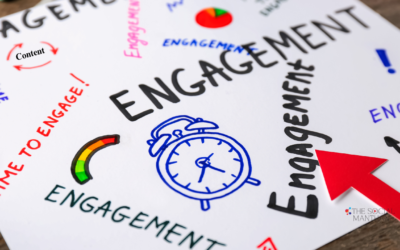There’s no denying that hiring a content design agency can significantly elevate your brand’s narrative and online presence, but it also poses potential pitfalls. You might inadvertently make critical mistakes that can lead to miscommunication, wasted resources, or subpar results. In this post, we will discuss the top five mistakes you should avoid when hiring a content design agency, ensuring you make informed decisions that align with your goals and vision.
Key Takeaways:
- Lack of Clear Objectives: Ensure you have well-defined goals for your content projects to guide the agency’s work effectively.
- Neglecting Agency Experience: Research the agency’s portfolio and expertise in your industry to ensure they possess relevant experience.
- Inadequate Communication: Foster open and ongoing communication with the agency to ensure alignment and address issues promptly.
Understanding Your Content Needs
Before you commence on the journey to hire a content design agency, it’s imperative to take a moment to evaluate your current content strategy and determine your specific needs. Having a strong understanding of what you require can significantly enhance the efficacy of your collaboration with any agency. This foundational step will ensure that what you’re looking for aligns with the unique offerings of the agency you choose to work with.
How to Assess Your Current Content Strategy
On your path to understanding your content needs, assessing your current content strategy is critical. Start by examining the content you currently have, evaluating its performance in terms of user engagement, lead generation, and the achievement of your overall business goals. Ask yourself: What works well? What doesn’t resonate with your audience? An honest assessment will provide insight into the gaps that need to be addressed and help you articulate your requirements to a prospective agency.
Additionally, consider the feedback you’ve received from your audience, customers, or internal team members. Look for common themes in their responses, and identify pain points that your current content does not address. This meticulous review will empower you to make informed decisions about what type of content to prioritize moving forward.
Tips for Identifying Specific Goals and Objectives
Content has the power to shape perceptions and influence decisions, so when identifying your specific goals and objectives, clarity is key. Begin by outlining what you ultimately wish to achieve with your content strategy, whether it’s boosting brand awareness, increasing conversions, or improving user engagement. Breaking these broad goals down into smaller, measurable objectives can help you formulate a clearer vision and facilitate your communication with a content design agency.
- Define your target audience to tailor your content effectively.
- Use analytics to inform your objectives and understand what drives your audience.
- Set realistic and timely milestones to keep your content strategy on track.
The more precise you are about your goals, the better equipped an agency will be to deliver content that resonates with your audience and fulfills your business aspirations. This clarity will serve as a guidepost throughout your partnership.
- Engage stakeholders to gather a wider range of insights and perspectives.
- Account for external factors such as industry trends that may impact your goals.
- Focus on a balance between short-term and long-term objectives to maximize effectiveness.
The identification of specific goals and objectives will not only streamline the hiring process but will also set your content design efforts up for success.
Factors Influencing Content Design Requirements
Goals can significantly influence your content design requirements, setting the stage for what you want your content to achieve. Factors like your target audience’s preferences, market trends, and the existing competitive landscape will all play a role in shaping your approach. By clearly defining your desired outcomes, you can determine the format, tone, and style of content needed to resonate with your audience and achieve the objectives you’ve laid out.
- Assess the maturity level of your content compared to competitors.
- Understand regulatory needs relevant to your industry that may affect your content approach.
- Consider technology and platform preferences that affect how you distribute content.
Now that you’ve identified the imperative goals, you can drill down into understanding the factors that will dictate your content requirements. These elements will help you determine the types of resources and expertise you’ll need to produce effective communication.
- Identify gaps in your current capabilities that may require external support from a design agency.
- Evaluate your budget constraints to ensure you align your content requirements without overspending.
- Stay aware of the scalability and flexibility needs as your business evolves.
The successful collaboration with a content design agency hinges on your understanding of the various elements that influence your content design requirements. By carefully considering these factors, you will be better equipped to partner effectively with an agency that meets your needs.
Understanding your content needs comprehensively will lay the groundwork for a fruitful partnership with a content design agency. You’ll find that when you articulate your unique requirements and objectives clearly, you’re not just hiring services; you’re investing in a strategy poised for long-term success.
Researching Potential Agencies
Little do many entrepreneurs realize, the process of finding the right content design agency goes beyond simply browsing websites and making a quick decision. Proper research is a vital step that can save you from costly mistakes down the line. When you take the time to investigate potential agencies thoroughly, you will gain insight into their strengths, weaknesses, and how well they align with your goals. This preparation will ultimately lead you to make a more informed choice as you seek to elevate your brand’s content strategy.
How to Conduct Effective Agency Research
There’s a wealth of information available online, and your first step should be to compile a list of agencies that specialize in content design. This can be done by searching industry-specific directories, reading reviews, and leveraging your network for recommendations. It’s also important to look beyond surface-level facts; take time to explore their services, industry focus, team qualifications, and any case studies available. Taking a structured approach to your research will help you eliminate agencies that don’t meet your standards before you even reach out to them.
Tips for Evaluating Agency Portfolios
There’s no better way to gauge an agency’s ability than to evaluate its portfolio. The portfolio should not only showcase their best work but also demonstrate their range and versatility in handling different projects. You should take note of the type of content they produce, the effectiveness of their design, and whether their style resonates with your vision. Look for case studies that provide insights into how they addressed specific client challenges, as this can reveal the agency’s problem-solving capabilities.
- Assess the diversity of projects they have worked on.
- Look for evidence of measurable results in their case studies.
- Consider whether their aesthetics align with your brand’s image.
Recognizing these elements will help you understand if an agency can meet your unique content needs.
Factors to Consider in an Agency’s Reputation
It’s necessary to understand an agency’s reputation in the industry, as this can reveal a lot about their reliability and expertise. You should seek out reviews and testimonials from previous clients, as these can provide insights into their professionalism and quality of work. Additionally, consider their standing within professional organizations or industry associations, as this can point to their commitment to excellence and continuous improvement. A well-respected agency typically has a robust reputation, which should give you peace of mind as you invest in your content strategy.
- Check for client testimonials on their website.
- Look for third-party reviews on platforms like Clutch or Google.
- Investigate their affiliations with professional organizations.
Recognizing an agency’s standing in the market will enable you to select a partner that enhances your credibility.
Agencies with a strong reputation not only deliver quality work but also cultivate lasting relationships. You should be wary of agencies that have consistent negative feedback or very few reviews, as this can be indicative of underlying issues. The reputation of an agency can also reflect its commitment to client satisfaction and its ability to adapt to varying demands.
- Evaluate how responsive they are to client communication.
- Analyze their engagement on social media and in professional forums.
- Consider the longevity of their client relationships.
Recognizing these factors will boost your chances of finding an agency that resonates well and delivers consistently.
Plus, when conducting your research, remember that due diligence is your best friend. The effort you invest in finding the right content design agency will pay off in achieving your goals and elevating your brand’s narrative. You’ll be more equipped to make an informed decision, ensuring a successful collaboration that ultimately enhances your content strategy.
Defining Your Budget
Keep in mind that setting a budget for hiring a content design agency is crucial to ensuring you get the most value for your investment. The right budget allows you to select a partner that aligns with your brand’s needs while also setting realistic expectations for the quality and scope of work. Approaching this aspect without careful consideration can lead to overspending or selecting an agency that won’t meet your requirements.
How to Create a Realistic Budget for Content Design
One of the first steps in creating a realistic budget is to define your specific needs and objectives for the content design project. This can involve assessing the scale of work, such as the volume of content, the types of deliverables you require, and any necessary research or additional resources. Once you have a clear understanding of your needs, you can research industry pricing to establish a baseline for what you should expect to allocate in your budget.
Additionally, consider factoring in the expected timeline and any potential revisions that may occur throughout the process. Content design is not only about creation but also involves editing and refining based on feedback. This allows you to understand how these variables might influence costs and subsequently helps in creating a well-rounded budget that accounts for all potential scenarios.
Tips on Value vs. Cost in Content Agencies
Assuming that the lowest bid will deliver the best value is a common mistake when hiring a content design agency. In reality, the cost can often reflect the quality of service and expertise offered. While staying within budget is important, understanding that value transcends cost can lead to showing better returns on your investment in the long run. Here’s a quick list of points to consider:
- Evaluate the agency’s portfolio and previous work to gauge their expertise.
- Consider client testimonials and the results achieved through their services.
- Assess the agency’s understanding of your industry and target audience.
- Check the level of communication and collaboration they offer.
After weighing these factors, it often becomes clear that a higher initial cost can lead to greater long-term benefits, making your investment worthwhile.
Defining your requirements clearly can help you in choosing an agency that can deliver value while also fitting within your budget constraints. Make sure that you communicate your expectations upfront, which aids agencies in crafting proposals that align with both your vision and budget. This level of clarity can significantly enhance your partnering experience.
Factors Impacting Pricing in Content Design
How to determine what factors may impact the pricing of your selected content design agency? There are several contributors that can affect the overall cost, including the complexity of the content, the experience level of the agency, and the depth of research required. Agencies that employ seasoned professionals with a proven track record may charge higher rates, but their expertise often translates to superior deliverables. Here’s a brief list of factors that can impact pricing:
- The scope of your project, such as the length and frequency of content deliverables.
- The degree of specialization required for your industry.
- Location of the agency and market rates in that area.
- Additional services such as SEO optimization, multimedia incorporation, and content strategy.
Any understanding of how these factors play into the pricing structure will better prepare you when discussing budgets with potential agencies or negotiating terms that fit within your capabilities.
Understanding these variations can help you make more informed decisions about where to invest your resources. You’ll find that elements such as brand strategy, design complexities, and even agency reputation reflect in their pricing models. By analyzing these components thoroughly, you can craft a budget based on realistic expectations and enhance your overall partnership experience.
- Understand the value that experience and collaboration bring to the project.
- Incorporate both financial and strategic expectations into your budget.
- Prepare for possible adjustments in pricing as the project scope evolves.
Any budget you set should not only aim to cover costs but to also ensure a productive and results-oriented collaboration with your chosen agency.
Evaluating Communication Skills
Despite the technical prowess of a content design agency, their communication skills will significantly impact your collaborative experience. Effective communication is the cornerstone of understanding your project’s needs, timelines, and overall objectives. An agency that communicates clearly and consistently can help you stave off misunderstandings and frustrations, ensuring that the creative process is both engaging and productive.
How-to Assess Agency Communication Style
Evaluating an agency’s communication style comes down to observing how they engage during initial conversations and how responsive they are throughout the hiring process. Pay attention to the way they answer your questions, their willingness to listen to your ideas, and how they articulate their approach. Additionally, consider their familiarity with various communication tools; agencies that utilize a range of platforms can enhance transparency and facilitate clearer interactions.
Tips for Ensuring Clear Expectations and Regular Updates
Tips for ensuring clear expectations and regular updates include establishing guidelines at the beginning of your collaboration. Clearly outline your project goals, timelines, and the channels you’ll use for updates. Regular check-ins can also aid in providing you with the opportunity to offer feedback, address concerns, and make sure everyone on the team is on the same page.
- Define communication channels prior to starting the project.
- Schedule regular updates to discuss progress and challenges.
- Encourage open dialogue for feedback and inquiries.
Thou should ensure that you and the agency are on the same wavelength to mitigate any potential issues before they escalate. Implementing structured check-ins will not only clarify expectations but also establish a rhythm for consistent development and feedback throughout the process.
- Set specific milestones for communications on project status.
- Encourage the agency to provide insights into their workflow and any forthcoming changes.
- Use project management tools to track statuses and facilitate discussions.
Thou can ensure that your partnership cultivates an environment of mutual respect and openness through these measures, ultimately leading to an abundant creative outcome.
Factors that Affect Agency Collaboration
How-to recognize the factors that affect agency collaboration involves looking at a variety of elements, such as team dynamics, previous experiences, and external pressures. An agency’s internal structure can also influence how effectively they communicate with you. By assessing the synergy within their team, you’ll gain valuable insights into how they will respond to your communication needs.
- Understand the role of each team member in the project.
- Assess the agency’s previous work and its related experiences.
- Be aware of any external factors impacting the agency’s workflow.
Any misalignment in these areas can lead to communication challenges. As such, it’s important to thoroughly vet potential agencies not just on the services they offer but also on how their team operates and collaborates internally.
- Inquire about the agency’s methodologies for team collaboration.
- Ask for examples of how they navigate challenges in team dynamics.
- Ensure you get a sense of their previous client collaborations and satisfaction rates.
Any discrepancies or lack of cohesion could hinder the progress of your project and the quality of the output, making it critical that you understand these aspects before making any commitments.
Communication as the Foundation for Success
Effective communication forms the foundation for a successful partnership with your content design agency. Make it a priority to evaluate their communication style during initial interactions and follow it up with consistent expectations throughout the project lifecycle. Addressing these factors will not only ensure that you’re collaborating effectively but will also pave the way for a robust and fruitful creative relationship.
- Regular assessments of communication effectiveness can help identify potential roadblocks.
- Direct feedback loops will help foster an environment of transparency and trust.
- Be open to refining communication methods as the project progresses.
Any delays in communication can lead to project setbacks, so it’s important to have a proactive approach to ensure that every aspect of your collaboration is aligned for success.
Checking References and Testimonials
Your decision-making process for hiring a content design agency should never overlook the importance of checking references and testimonials. These elements serve as your window into the agency’s previous work and client relationships, ultimately providing you with vital insight into their suitability for your project. However, not all references are created equal, and discerning the level of service an agency provides often requires a strategic approach to gathering and evaluating this information.
How to Effectively Gather Agency References
Assuming you’ve shortlisted several content design agencies, the next step is to investigate deeper by gathering references. Start by requesting a list of previous clients, ideally those with projects similar in scope to yours. This information can help you determine what kind of work the agency excels at and whether they have experience in your specific industry. Don’t hesitate to ask the agency about their relationship with these clients, such as the duration of the partnership and the scale of projects undertaken. This should give you a clear understanding of the agency’s capabilities and reliability.
Once you have a list of references, reach out to them with specific questions. Inquire about their overall satisfaction, the agency’s responsiveness, the quality of the delivered content, and how well the agency met deadlines and budgets. Be sure to take detailed notes during these conversations, as they will be imperative for your final evaluation of the agency’s fit for your needs.
Tips for Analyzing Client Feedback and Testimonials
While testimonials can illuminate an agency’s past performance, you must approach them with a critical eye. Look for specific feedback rather than vague statements, as concrete details provide a clearer picture of the agency’s strengths and weaknesses. Pay particular attention to how testimonials address aspects of the project that are relevant to you, such as creativity, communication, and project management. This will help you gauge whether the agency is capable of meeting your expectations and requirements.
- Assess the authenticity of each testimonial by looking for clients with similar needs to yours.
- Be wary of overly optimistic language devoid of substance, as these might be red flags.
- Check if testimonials include tangible results or metrics that demonstrate the agency’s impact.
- Assume that widespread positive feedback is reassuring, but always verify its context.
Testimonials should complement your research but not solely dictate your choice. You should also seek out independent reviews and feedback on platforms like Google or industry-specific forums. These additional perspectives can provide a more comprehensive understanding of the agency’s reputation within the larger community.
- Ensure that testimonials originate from credible sources rather than anonymous feedback.
- Look for dates on testimonials to ascertain their relevance and currency.
- Consider the balance of positive and negative reviews to gauge overall client sentiment.
- Assume that any agency with an abundance of testimonials should also have an equal or greater volume of constructive criticism.
Factors That Impact Trustworthiness of References
Little does a client realize that not all references provided by a content design agency may be trustworthy. Factors such as the length of the relationship, the nature of the project, and even the client’s industry can significantly influence the reliability of the feedback you receive. References for long-term partnerships may provide richer insights than one-off projects that may not reflect the agency’s consistent performance. Additionally, be cautious of agencies that only provide references from high-profile clients, as this may not represent the average experience.
- Seek a mix of reference types, including both large and small clients.
- Look for responses that mention specific project details and outcomes.
- Evaluate whether the reference is a direct user of the agency’s services or someone in a supervisory role.
- Perceiving the context and environment of a project can greatly affect the feedback provided.
Understanding the landscape of references requires your critical analysis. You must also recognize that context matters; the scope and duration of a project can shape how satisfied a client feels. By identifying biases and contextualizing feedback, you can better determine the trustworthiness of the references presented to you.
- Investigate whether the agency has faced any major client turnover that could signal deeper issues.
- Look for trends in the feedback, including repeated strengths or weaknesses noted by different clients.
- Ask for references from clients that were not entirely satisfied to gain a complete picture.
- Perceiving the overall trustworthiness of different references may require you to speak to more than just those handpicked by the agency.
Analyzing feedback from clients and evaluating references with a critical eye can arm you with the knowledge needed to choose the right content design agency for your needs. Taking these steps ensures that you are making an informed decision that will propel your content strategy forward successfully.
Understanding the Contract and Scope
Unlike many business transactions, hiring a content design agency involves navigating through contracts and specific agreements. Understanding the fine print is crucial for ensuring that both parties are aligned in their expectations and that your investment yields the desired results. Contracts can often come laden with jargon that may be confusing, but grasping the core elements will provide you with necessary leverage throughout the working relationship.
How-to Examine Agency Contracts in Detail
Detail-oriented examination of agency contracts is crucial to protect your interests. Begin by breaking down the contract into its key sections, such as scope of work, payment terms, timelines, and termination clauses. Pay close attention to any clauses that might impose penalties for early termination or stipulate that certain deliverables must adhere to a rigid timeline, as this could affect your project’s flexibility.
Another critical aspect to look for is intellectual property rights. Clarifying who will own the content produced can save you from potential legal disputes later. You should also benchmark the agency’s terms against industry standards to ensure you’re not accepting unfavorable conditions that could compromise the integrity of your brand.
Tips for Defining Scope and Deliverables
Contracts should clearly define the scope of work and deliverables to prevent misunderstandings down the road. You must outline exactly what services are to be provided, including timelines and specific content types such as articles, videos, or infographics. Being meticulous in this definition helps set realistic expectations for both you and the agency.
- Specify the number of revisions that are included in the initial agreement.
- Ensure that timelines for deliverables are reasonable yet firm.
- Consider including performance indicators to measure success.
Assume that any ambiguity in the scope or deliverables may lead to frustration and unmet expectations. Clarifying these elements at the outset will bolster your relationship with the agency and ensure that your vision is brought to life effectively.
Factors Related to Flexibility and Changes
Examine how the contract accommodates changes and flexibility. Projects rarely go exactly as planned; therefore, it’s crucial to address how updates to scope, timelines, or deliverables will be managed. Assess whether the agency is open to iterative feedback and adjustments as the project evolves, and verify if any additional costs might arise from changes in the project scope.
- Look for clauses that outline how to address scope changes properly.
- Consider whether it is necessary to delineate instances in which additional fees would apply.
- Ensure there are provisions that allow for collaboration and communication throughout the project lifecycle.
Assume that a rigid contract may hinder your ability to adapt as your needs shift. By ensuring flexibility in your agreement, you will be better positioned to achieve your content goals.
Deliverables should not only be quantifiable but also adaptable to your evolving strategies. If they are too rigidly defined, you may miss opportunities for refinement or enhancement as new insights come to light during the project. Therefore, it is wise to discuss adaptability potential in your contract negotiation stage.
- Ensure that the deliverables allow for scalability in your projects.
- Agree upon a checkpoint or review stage to discuss deliverables before finalization.
- Clarify what constitutes a ‘completed’ deliverable to avoid confusion later.
Assume that having clear, adaptable deliverables will enable you to pivot as necessary while still holding the agency accountable for meeting your business needs.
Related topics to explore include project management methodologies, content strategy planning, and effective communication channels between your team and the agency you choose. By understanding these relationships within the scope of the contract, you will enhance your collaboration and optimize the content production process.
To Wrap Up
With this in mind, avoiding the top five mistakes when hiring a content design agency can significantly enhance your chances of success. By establishing clear objectives, thoroughly assessing agency portfolios, ensuring a proper fit with your brand ethos, discussing transparency in pricing, and recognizing the importance of communication, you position yourself for a fruitful partnership. These considerations are not just best practices; they are important steps to help you navigate the complexities of the hiring process effectively.
Your choice of a content design agency can greatly impact your project’s outcome and overall brand presence. By taking the time to follow these recommendations, you can mitigate risks and foster a collaborative relationship that yields exceptional results. Note, the right agency is not just a service provider; it becomes a pivotal part of your team that understands your vision and helps propel it forward with creativity and expertise.
FAQ
Q: What are some common mistakes businesses make when hiring a content design agency?
A: Some common mistakes include not clearly defining project goals, failing to check the agency’s portfolio for relevant experience, and overlooking the importance of cultural fit between the agency and the business. These missteps can lead to miscommunication, subpar results, or inefficient collaboration during the project.
Q: How important is communication when working with a content design agency?
A: Communication is crucial when partnering with a content design agency. Clear and regular communication helps ensure that both parties are aligned on project objectives and timelines. A lack of communication can lead to misunderstandings, delays, and ultimately a final product that does not meet expectations. It’s important to establish a communication plan during the initial discussions with the agency.
Q: What should I look for in the portfolio of a content design agency?
A: When reviewing a content design agency’s portfolio, you should look for examples of their work that align with your industry and project needs. Pay attention to the variety of content formats they have experience with, such as articles, infographics, and videos, as well as their ability to convey different brand voices. Additionally, assess the impact of their work through metrics if available, such as engagement rates and client testimonials, to understand their effectiveness and reliability.








